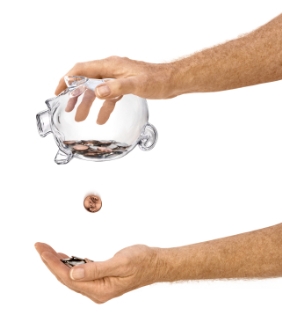What is a low-cost auto insurance program?
Emmet Pierce
The California state government has created a low-cost auto insurance program to help people with limited incomes purchase car insurance.
Nancy Kincaid, spokeswoman for the California Department of Insurance, says about 15 percent of the state’s 24 million licensed drivers do not have auto insurance. Part of the reason for this is that many Californian drivers have allowed their policies to lapse because of the prolonged recession.
 “For some folks, it has been a matter of ‘Am I going to put food on my table or buy auto insurance?'” she says.
“For some folks, it has been a matter of ‘Am I going to put food on my table or buy auto insurance?'” she says.
And for many Californians, their financial woes don’t stop there. Robert Hunter, director of insurance for the nonprofit Consumer Federation of America, says that people who stop driving because they can’t afford car insurance are placed at an economic disadvantage.
“They (typically) have worse jobs,” he says. Not having a car can limit the type of employment you can get, he adds.
California’s low-cost insurance program was created in 2000 for people who make less than 250 percent of the federal poverty level, says Pete Moraga, a spokesman for the Insurance Information Network of California. That currently translates to about $59,000 per year for a family of four and about $29,000 per year for a single person.
A liability policy under the California’s Low Cost Auto Insurance Program provides coverage up to $10,000 per person in case of bodily injury or death, with a cap of $20,000 per accident. It also provides $3,000 in property damage coverage for each accident.
Applications are assigned by the state to insurance companies licensed in California, and funding is provided by a five-cent annual assessment on insured vehicles.
The annual price for policyholders ranges from about $230 to $350, depending on which county they reside in. Costs are based on the insurance industry’s claims experience in each county.
Unfortunately, there is no additional programs for the drivers who can’t afford to make even the reduced payments, Kincaid says.
“We realize there still are people who say they can’t afford insurance at all,” she says.
Do you qualify for a low-cost auto insurance program?
Under eligibility requirements, you must:
- Be at least 19 years of age and have been continuously licensed to drive for the past three years.
- Have no felony or misdemeanor convictions on their driving records.
- Have had no at-fault accidents involving bodily injury or death in the past three years.
- Have no property damage accidents on their records in which they were principally at fault during the previous three years.
At the end of 2012, the state had 9,068 low-cost policies in force, says Robert Peterson, director of the Center for Insurance Law and Regulation at the Santa Clara University School of Law in California. That’s too low a figure to consider the program a great success, he adds.
Peterson says the program would attract more drivers if it included collision coverage, which pays to repair your own car following an accident.
Also, undocumented immigrants are a potential population who would benefit from the program – but many fear they might be deported if they take part, Hunter says. In May 2013, about 2.6 million state residents were in California illegally, according to the University of Southern California.
Low cost auto insurance program in Hawaii
In addition to California, Hunter says there are state-administered low-cost car insurance programs in Hawaii and New Jersey.
Under the Hawaii Motor Vehicle Insurance Law, recipients of state or federal public assistance benefits can receive free no-fault car insurance coverage. The program was started in 1987 to enable economically disadvantaged people to continue driving so they could more easily find jobs.
To be eligible, drivers must be recipients of direct cash payments through the state Department of Human Services, or receive benefits from the Supplemental Security Income program under the U.S. Social Security Administration.
Under no-fault policies, the insurer must pay the medical bills of the driver and his or her passengers, regardless of who caused the accident.
There are about 900,000 licensed drivers in Hawaii. Sam Thomsen, an insurance investigator with the Hawaii Department of Commerce and Consumer Affairs (DCCA), says there currently are 3,734 vehicles insured under Hawaii’s low-income car insurance program.
Hawaii’s low-income auto insurance policies provide drivers with:
- Bodily injury liability coverage of $20,000 per person, per accident, with a cap of $40,000 for each accident.
- Liability coverage of up to $10,000 per accident for damage caused to property.
- Personal injury benefits of $10,000 per person per accident, for the driver and his or her passengers.
All carriers that are licensed to operate in Hawaii share the costs of running the program, Thomsen says. It is administered through the state Department of Human Services (DHS).
Low-cost auto insurance program in New Jersey
New Jersey’s Special Automobile Insurance Policy (SAIP) makes medical-coverage-only car insurance coverage available to drivers who are eligible for federal Medicaid with hospitalization coverage.
Medicaid helps low-income individuals pay for the costs associated with long-term medical care. Such people may buy SAIP policies at a cost of $365 a year.
Marshall McKnight, a spokesman for the New Jersey Banking and Insurance Department, says the program won’t be affected by the implementation of the Patient Protection and Affordable Care Act (ACA), also known as Obamacare.
“If (you) qualify for Medicaid with hospital coverage, (you) qualify for this program,” McKnight says.
The policies cover accident-related emergency treatment along with the treatment of serious brain and spinal cord injuries, with a cap of $250,000. Policyholders receive a death benefit of $10,000.
The car insurance program excludes coverage for:
- Damage you cause to other persons or property.
- Damage you cause to your own vehicle.
- Outpatient medical treatments.
There were 34,455 such policies in place as of September 2013, McKnight says.
